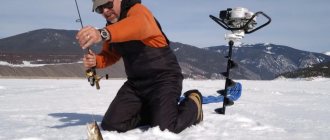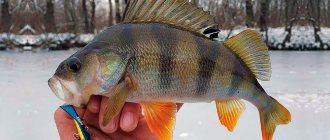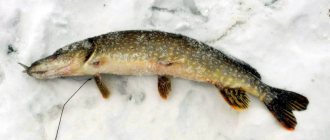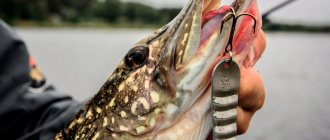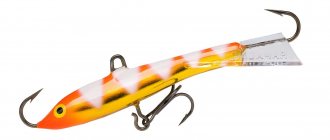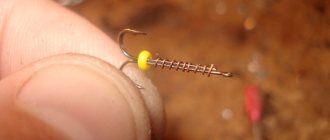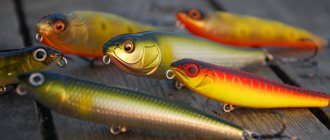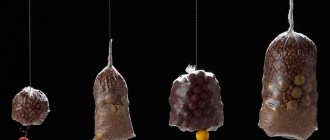For ice hunters of predatory fish, catching perch with a spoon in winter is a classic of the genre. This method of fishing has been practiced since historical times. Some beginners make the grave mistake of believing that winter lure fishing is easy. Fishing rod, piece of iron, hole - just twitch and wait for a bite. This “method” can be justified in the waters of the north teeming with unafraid fish. Winter trolling of perch is a delicate process that includes many little details and nuances that directly affect the size of the catch.
This article is a generalization of practical fishing experience, a guide to winter trolling for striped robber. Beginners will find instructions for action, and knowledgeable anglers will pick up some nuances that will be useful. Winter fishing for perch with a spoon is not just about lowering the bait into a hole, but a whole system of measures necessary to achieve results.
Search and catch
The basis of successful striped fishing is search. You need to find this fish, and only then try to catch it using a variety of gear and techniques. This requires a systematic approach that takes into account many variables. Algorithm of actions:
- Strategic choice of place, time and specific body of water. Sometimes this factor is missed, and it is not always possible to plan a fishing trip. This group also includes the influence of weather on the perch bite in a particular body of water.
- Finding striped fish in a pond and tactics.
- Actions depending on what the initial search led to.
- Direct fishing technique.
- Using a set of gear for different conditions.
Search tactics
Finding winter perch is a separate broad issue. It is discussed in detail in the article about catching perch in winter. This information is also partially disclosed in other publications on the site dedicated to this fish. Let's add it here too.
First of all, the location of perch in a winter reservoir is determined by the presence of areas rich in benthos and food fry. Depending on the movements of this food mass, perch migrates at different periods of time. Catching perch with a lure in the dead of winter should be done at its winter camp sites, from which the predator, due to the low water temperature (and therefore the passivity of the fish), does not stray far. During this period of winter, he can practically not move, and not gather from afar for the vibrations of the spinner that irritate him. But if you throw the bait under your nose (no further than 2 meters from the fish), then a bite is very likely.
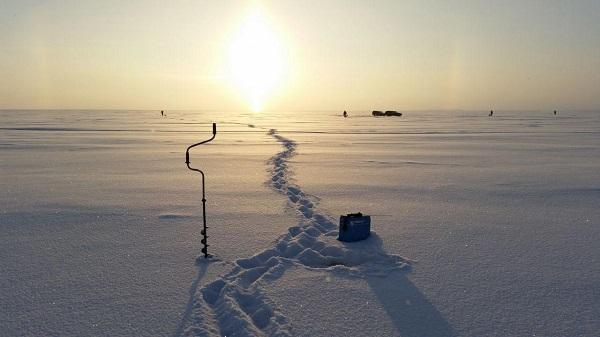
The choice of location also depends on the size of the fishing object. Flocks of large humpback whales stay in their permanent favorite places. These are exits from pits, banks, underwater depth changes, edges. More details about this in the article on catching large perch in winter. Schools of medium- and small-sized predators live at shallower depths. They can often be found in the coastal zone. Branches of trees and shrubs frozen into ice, last year's reeds, places where streams and tributaries flow, hollows under banks with overhanging grass, snags - all these are promising points. In small rivers in such places you can catch large solitary humpback whales.
Catching perch on the first ice with a spoon (and other gear) occurs in larger water areas. At the beginning of winter, the predator actively feeds, making raids over large areas. Therefore, an even larger area needs to be surveyed. A similar situation is observed at the end of winter; the striped fish becomes more active and moves closer to the shore, to depths of up to 5 meters. Of course, all these are just general trends. On a specific body of water, everything may be different.
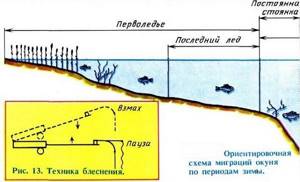
Fishing tactics
The tactics of searching and catching perch using a spoon from ice are inextricably linked. The main method is to enter a promising area and drill holes using a square-cluster method at a distance of 10-15 meters. Then check the holes with the most catchy lure in the fisherman’s opinion. If there are no bites, the search continues.
This distance is enough to collect a predator from the surrounding area during periods of fish activity. But in the dead of winter, as already mentioned, the fish may not walk. In addition, it can stand quite sparsely over a large area. There is only one way out - when such a fishing spot is found (for example, when catching fish), the entire square is drilled around the successful point, and holes are made every 2-3 meters.
Features of tactics:
- Rocking the hole. When we find a school (biting, catching, poking or using the under-ice camera), we begin to rock the hole. A sleepy perch can be stirred up and forced to attack if you arouse its interest. Changing baits and varied play will help with this. Moreover, if fishing occurs at the beginning or end of winter, you need to act quickly, without delay. Active fish may simply leave the fishing zone.
- Fishing on the rise. When determining a catchable place, the school can be raised from the bottom higher, right up to the ice itself. This will speed up the fishing process. This method is often used by athletes - after all, time and every extra gram of catch are important. To implement this method, the spoon is not lowered completely after each catch, leaving it at a level 10-20 centimeters higher than the previous one. If at some point the rise fails, then you need to lower the bait down again, towards the fish, and start again.
- The spoon catches perch from long distances. Therefore, when fishing at the beginning and end of winter, the first movements and strokes should be made sweeping and amplitude in order to create strong vibrations in the water.
- Drilling during passive biting of a catchable place - this method has already been discussed above.
Catching perch in winter with a spoon, choosing gear
Rod
For winter hunting for perch, light fishing rods 30-50 cm long with a thin whip and a heat-insulated handle (wooden, foam, neopreon) are used. The size of the rod's whip depends on the activity of the fish; if the bite is good, it is worth taking short rods to make it easier to make short jerks; when there is no bite, a slow game is preferable; here it is better to use rods with long whips. Very popular for catching perch are fishing rods - “balalaika”, these fishing rods have a reel built into the handle.

It is advisable to equip fishing rods with a nod; this can be a piece of nipple rubber, a metal plate or a fishing line twisted in a spiral. The nod should protrude 5-6 centimeters from the edge of the rod. The guard makes it possible to notice the most careful bites of the striper and smooth out the play of the spinner, so the nods are selected separately for each spinner.
Coil
The rods can be equipped with reel reels, which are necessary only for storing fishing line, or with a multi and a meat grinder.
fishing line
Monofilament fishing line with a thickness of 0.1-0.2 mm, the diameter of the fishing line depends on the weight and size of the spinners. For fishing with a 2-2.5 cm spinner, you need thin fishing lines with a diameter of 0.1-0.12 mm, and it is on such a fishing line that small spinners have the highest quality game. Braided fishing line is not very suitable for winter fishing.
You should wind no more than 10-15 meters of fishing line on the rod when fishing in shallow waters and 20-25 meters if you are going to fish in deep water areas
Spoons
The success of the event is also influenced by the choice of the right bait. There are a huge number of winter lures for perch of various designs. A detailed analysis of catchy winter lures for perch.
Spoons vary in size and weight, as well as in the shape of the blade configuration. This defines:
- Depth of use on the reservoir;
- Features of wiring and play.
The fisherman needs to have a set of different baits, which will allow him to select the right one directly on the pond.
Cheap tees with a drop here: https://ali.pub/469xzj
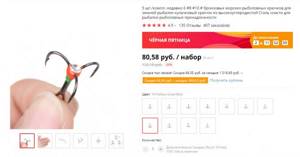
Tackle for trolling
Gear for catching perch in winter with a spinner is selected depending on the weight of the bait and the size of the expected trophy. The range is quite wide - from ultra-light fishing rods for fishing with light small spoons at shallow depths to reliable fishing rods with reels (heavy baits, large fish). The reel on a perch winter fishing rod is needed only for carrying fishing line - it is not involved in fishing. Therefore, in winter, its choice is not critical, at the discretion of the fisherman, the main thing is that it is convenient. A more important detail is the fishing rod.
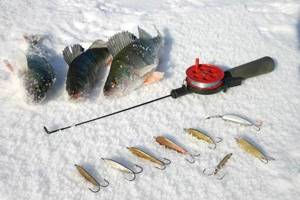
With a nod
A fishing rod for trolling perch needs to be flexible and elastic, allowing you to feel the bait and make a reliable hook. The grip of an active perch in winter is biting, usually felt in the hand. But in the dead of winter, passive fish often bite on the rise of the nod, knocking out the bait. It is better to track such a bite with a nod. The nod for trolling perch in winter is chosen to be soft; it should not make parasitic oscillations and disrupt the action of the bait. For fishing, you can use lavsan, metal or homemade soft guards. Under the weight of the bait, the nod should bend almost completely and not spring back in the opposite direction. It will accurately register a bite on the rise by straightening out. It is even more advisable to equip a fishing rod for trolling perch with heavy baits in winter with a nod (since they are coarser). Then even the most careful bite will not go unnoticed.
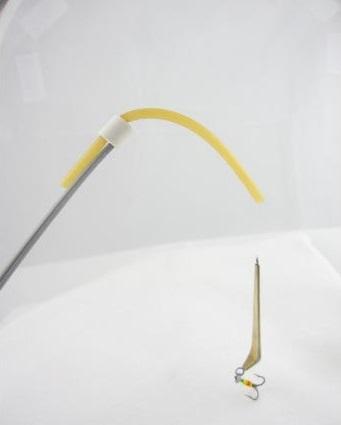
Kickless fishing rod
Recently, for winter fishing for perch with a spoon, it has become popular to use light fishing rods, similar to fishing rods for reelless jigs. You can make one yourself from an ordinary balalaika and the tip of a summer fishing rod. The tackle turns out to be so light that you can feel the most careful bites in your hand (according to the apologists of this fishing method). Winter trolling of perch without a nod works great against an active predator. Passive fish in the dead of winter can bite so gently that even with such gear you may not notice the bite. Therefore, a very soft nod (in common parlance “snot”) will not hurt.
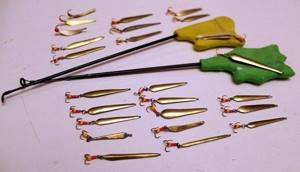
Where and when to catch perch in winter
Throughout the winter, flocks of spiny minke whales can be found in a wide variety of places. In any case, you need to look for perches on the river. During different periods of winter they can be concentrated in different places. During warmer periods, schools of perch should be looked for close to the shore, near vegetation, at shallow depths. And with a strong drop in temperature, the search location must be changed towards deeper places in the river, where all the fish migrate. In such places in the wilderness, the temperature regime is about 4°C.
The most comfortable winter fishing for perch usually occurs at a depth of one to two meters. Therefore, there is no need to lower the bait deeply, which is a plus and eliminates some inconveniences during fishing. The most promising places for catching perch in winter are:
- Sandbank with a depth of half a meter to two meters;
- Any edges from the bank to the riverbed;
- Border between reeds and clear water;
- Hill at the bottom;
- Places with changes in soil composition;
- Trees fallen into the water.
Sometimes unfavorable weather conditions can put an end to perch fishing in winter - changes in atmospheric pressure, strong wind, its direction and even humidity.
It is necessary to go in search of striped humpback whales in calm and clear weather with stable atmospheric pressure. Usually the best perch bite is in the morning, and in the afternoon and evening the activity is much worse. But if there was no bite in the morning or during the day, then the probability of an evening bite is very high. Therefore, in this case, there is definitely no need to rush to leave the pond.
Our detailed article on ideal perch biting conditions.
Behavior of perch under ice
In the vast majority of cases, perch lives in schools underwater. The smaller the individual, the larger the flock. Most often, palm-sized minke whales gather in schools of one and a half to two dozen. Moreover, catching some individuals does not scare off others at all. Therefore, once you find a flock, you can catch it all to the last tail. The larger the striped humpbacks, the smaller the flock size. Trophy individuals over 1.5 kg generally stay apart.
Watch a video about the behavior of perch under ice:
Drilling holes and tactics for finding places
In the case of perch fishing, you should not underestimate the importance of a high-quality drill, because you will have to drill a lot. Sometimes when searching for schooling perch, the number of holes drilled is in the hundreds. The most popular technique for drilling holes is the checkerboard pattern. The distance between the holes is several meters from each other. Both in shallow waters and on the edges, this option most promisingly covers the fished area. One of the promising options in perch fishing is baiting. In this way, small things are attracted and held to the hole, and then the perch comes up behind it.
Equipment
The correct equipment of a winter fishing rod for catching perch with a spinner consists of several key points:
- Selection of fishing line (type and section).
- Correct attachment of the spinner.
- Correspondence (balance) of the weight of the bait, the diameter of the fishing line and the fishing rod.
Accordingly, for light fishing rods with small baits, you need to use a thin line, and vice versa. As the main fishing line for winter trolling perch, you should use regular monofilament, or better yet, special fluorocarbon. The diameter of the fishing line for trolling perch in winter is selected based on the “size” of the tackle as a whole. Typically the thickness is taken in the range of 0.14-0.25 mm. Only for catching large fish at great depths using heavy spoons (jigs) does it make sense to use a thicker fishing line.
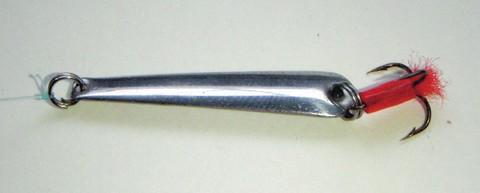
Attachment via winding ring
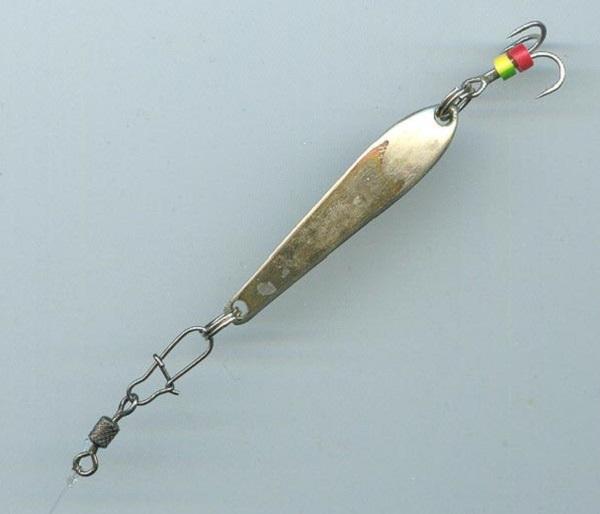
With a carabiner and a swivel - not advisable, too much extra
How to properly tie a winter lure to a perch? The fishing community is divided. Some winter roads claim that the fastening should be blind (with a knot directly to the fishing line). Others believe that it is better to use a loop or carabiner (clasp). The first argue their opinion by the fact that the hinged mount worsens the performance of the spinner. But this can easily be checked at home in the bathroom. Winter fishing tactics often require the ability to quickly change bait (even with several pre-configured gear).
One thing is true - too large a carabiner can really affect the performance of a light spinner, especially a fluttering one. This moment is unlikely to affect a heavy nail. Fasteners must be of high quality and miniature. Miniature fly fishing (French) fasteners are great for this.

Fly fishing fastener
Spinner attachment methods:
- To the line with a clinch or palomar knot;
- Through a loop (figure eight or rapala knot);
- Through the clasp (the carabiner can also be tied with a clinch or palomar).
What exactly to use is up to the fisherman to decide, depending on personal preferences, his lures and experience. The perch tackle is not equipped with a leash.
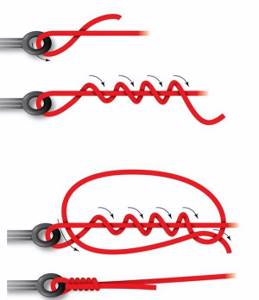
Improved Clinch
Rapala node diagram

Palomar assembly diagram
Retrofitting the spinner
Winter perch responds well to additional stimuli, which often act as a point of attack. Soldered hooks or hanging tees of spinners need to be decorated with beads, cambrics or lint. Perch simply loves the bright red color. It also responds well to natural tones - brown and green, similar to the colors of crustaceans and underwater insects. Sometimes yellow, orange and even blue colors work well.
As a provocateur, you can place a fly or small fish on a retractable leash, either tightly or in a sliding version, higher above the spoon. On spinners with suspended provocateurs, sometimes the Finnish version of the rig works well - a hook with fibers (beads, bloodworms) or a fly on a short (3-7 centimeters) leash made of fishing line (chain). The presence of such decoys turns on the food competition reflex in perch.
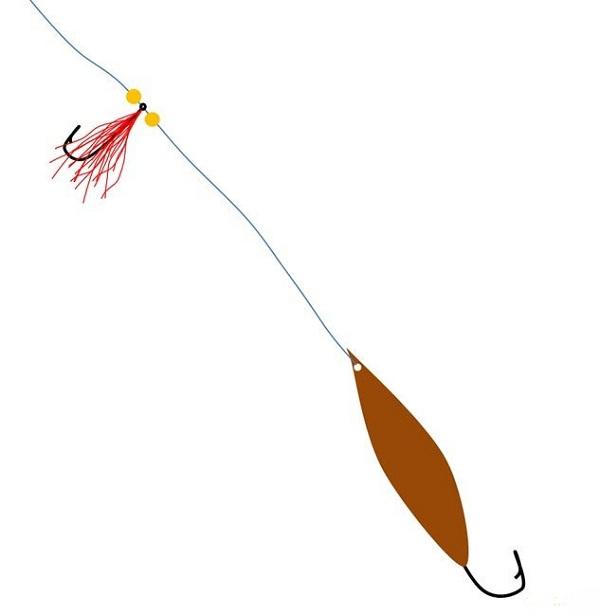
Sliding front sight
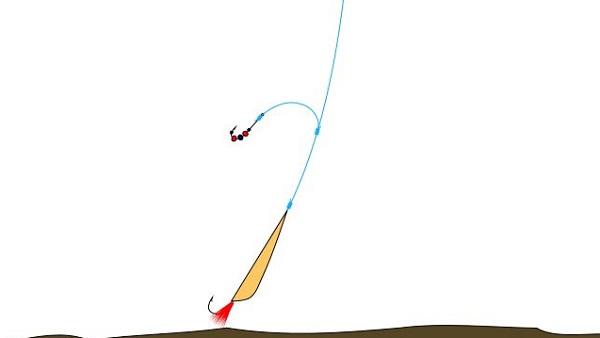
Rigging a fly on a leash
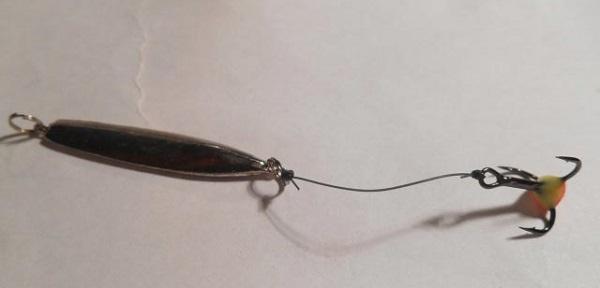
Finnish equipment
Set of fishing rods
The best option is to have several pre-configured winter gear of various calibers in stock. This will allow the angler to quickly adapt to the ice without dressing. The winter fishing kit may include:
- Light fishing rod, fishing line 0.14-0.16, micro-spinners. For fishing at shallow depths (up to 5 meters) for small and medium-sized perch.
- Medium option (line 0.16 – 0.18). The most popular fishing option, the main one. Standard winter fishing rod for trolling, bait 4-7 cm.
- Heavy artillery. Powerful rod with reel. Allows you to fish with heavy winter lures at depth. For targeted hunting of humpback whales in deep places.
How to catch perch with a spoon in winter
Let's begin to consider the most subtle moment of perch trolling in winter - retrieving and playing with bait. The technique of catching perch with a spoon in winter is a creative moment; over the years, every experienced angler develops his own unique game. Different types of winter spinners require certain wiring. It is better to study this issue at home in advance with a fishing rod in your hand over a bathtub or barrel of water. Playing a spinner for perch in winter determines success. Even if you have everything else - the right gear and bait, a catchable place and time - without the right wiring, you may not get a bite. In general, there is no secret to catching perch in winter with a spoon. The main thing is to choose a game and develop a flashing system. Here are the main points of fishing with spoons:
- Classic winter trolling - toss and pause. After the toss, the fishing rod returns to its original position. The spoon makes its somersault. The pause is maintained until the spinner stops. The amplitude and pause time are selected empirically for each spinner and fishing.
- The first reconnaissance throws are made with a larger amplitude. You need sweeping swings to swing the hole. These movements attract fish from afar. 3-5 such tosses in a new hole are enough, after which we move on to the standard game.
- If after making regular throws there is no bite (within 7-10 series), you need to experiment with the amplitude and time of pauses, and add shaking when the spinner stops.
- Tap the spoon on the bottom, raising a cloud of turbidity - this attracts the striped one.
- Try playing with the lure in jerks, like a jig.
You need to experiment with the hole, choosing on each fishing trip that unique version of the game that will bring a bite. And then throughout the entire fishing use this type of wiring and “sharpen” it.

Catching perch with a jig
Jig fishing for perch is considered more delicate compared to trolling, which is why the tackle here is somewhat more delicate.
The tackle is based on a fishing rod up to 25 cm long. The classic fishing rod for jig fishing is the “balalaika”. It is comfortable, light and fits perfectly in the hand. The optimal nod is a version 5 cm long and 2-3 mm thick. When fishing with a jig, the optimal choice of fishing line is very important. Some anglers use options with a diameter of 0.15 mm or more, while others prefer a sporty approach to this issue and use a fishing line of about 0.05 mm. Both of these options are hardly acceptable in ordinary and sane fishing. An excellent choice in this case would be an intermediate option - about 0.1 mm. It is necessary to reel about 20 meters of fishing line onto one jig tackle.
There should be a golden mean in choosing a jig. A light jig will sink to the bottom for a very long time, and a heavy jig will fall catastrophically quickly, hitting the bottom and demonstrating a game that is not interesting to the fish. For a standing reservoir, the optimal weight when choosing a jig is considered to be about 0.3 grams.
Tungsten jigs are much more convenient than lead jigs - they are smaller in size with the same weight. The color and shape of the jig are absolutely insignificant, and are more necessary to please the angler’s eye. In any case, the jig should not be empty - two or three bloodworms should be attached to the hook. And with a good bite, one will be enough.
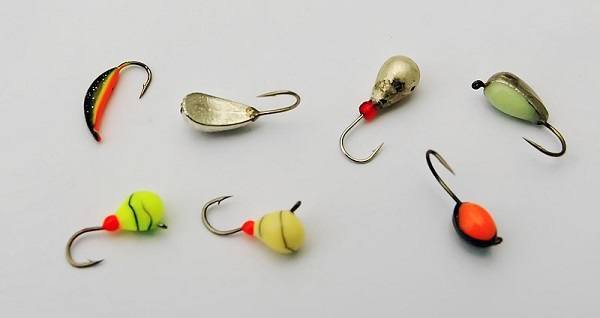
Very popular in perch fishing are miniature vertical jigs - devils. The size of such a bait is about 5-7 mm in length and 3-4 mm in diameter.
Technique for catching perch with a jig:
- After lowering the jig to the bottom, the fishing rod must be raised to a height of up to 30 cm, while making some vibrations with the bait;
- After several taps of the jig on the bottom, it is necessary to raise the jig to a small distance of about 5 cm;
- Raising the jig from the bottom by 20-30 cm and tapping the whip with your finger;
- Twitching the jig at the very bottom using short pauses of about 2-3 seconds.
Secrets and nuances
There are still some points that should be applied when flashing in winter. Perhaps after mastering the wiring technique. If it works out, then you can do it right away.
- When winter fishing on a sunny day (especially in shallow water), the holes are covered with snow (or the sludge is not completely removed). Use the handle of a spoon to make a small hole in the ice crumbs, and drop the spoon there. Sometimes a perch is frightened by a column of light in a dark background. It is especially important not to flicker between the sun and the hole (not to create sudden changes in illumination), this scares not only the perch, but any fish in general.
- Perch is strongly attracted to dregs. There is even a special tackle based on tapping on the bottom - a bulldozer. It is worth using this wiring element more often.
- When fishing for perch in winter, always pay attention to retrofitting the hooks with bright elements. Basically, the perch grabs them, and not the spoon. In this regard, a decorated hanging tee (with a drop), a hook with bristles, as well as various flies or bubbles work well. At great depths in winter, three-pieces with a drop of fluorescent varnish work well, at shallow depths - red, yellow or white.
- Using special perch bait in winter often brings good results.
- There is an opinion that in winter, closer to spawning, perch is reluctant to take large baits, since its abdominal cavity is filled with caviar or milk, preferring jigs or micro-spinners.
- When fishing with spoons, you can attach bloodworms, maggots or pieces of fish to the hanging hooks of the rig. During periods of low biting in winter, this action can bring a significant catch.
Subscribe to the channel:
My YouTube channel RYBAFAN on fishing:
We're OK
Types of perch spinners
Spoons are classified according to several criteria:
- by type of game;
- by equipment;
- according to the material of manufacture;
- in size.
Animation type
Based on how the spoon behaves underwater, baits are conventionally divided into “studs”, “gliders” and bottom ones. The first sink quickly and deviate little from the vertical axis. As a result, they work better in the following conditions:
- in strong places, for example, in snags;
- by passive predator;
- at great depth.
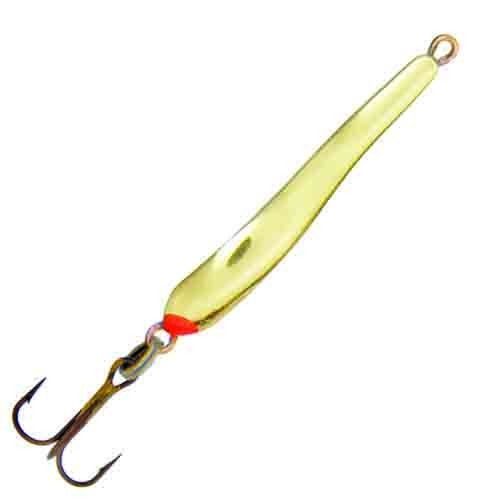
The second type of spinners for catching perch in winter is distinguished by the breadth of its body and sweeping action with a large deviation from the longitudinal axis, akin to a balancer. They are usually called "gliders". They are used in the following places and conditions:
- in clean areas;
- at shallow depths;
- for quickly collecting active perch to the hole.
Bottom spinners work like a bait such as a bulldozer. They are much heavier than others, and play with them in the bottom layer. Often they are only raised from a horizontal to a vertical position without lifting them from the bottom.
READ The best tackle for pike in 2021, which always brings results for me, types of postings
